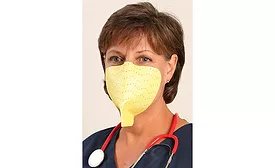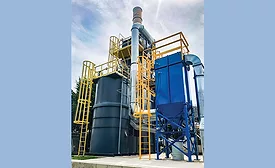Home » safety
Articles Tagged with ''safety''
Two Huntsman facilities received Certificates of Honor, while four were recognized with Certificates of Excellence.
Read More
Henkel North America Announces COVID-19 Support for Employees and Communities
Henkel has donated over $600,000 in North America to date, and 1.2 million units of essential household hygiene product donations have been allocated to organizations that provide medical supplies, basic needs for food and hygiene, and disaster relief within the U.S. and Canada.
May 15, 2020
Avery Dennison Partners with Global Safety First to Produce Self-Adhesive N95 Masks for Healthcare Professionals
The new N95 masks reportedly adhere gently to the face with double-coated, skin-friendly adhesive.
May 14, 2020
Two PPG Facilities in Ohio Receive Recognition for Environmental, Health, and Safety Initiatives
PPG's Barberton location was presented with an Award for Excellence in Health and Safety Performance, while the Huron facility received recognition for Environmental Performance.
May 13, 2020
MAPEI Receives Over 255 Indoor Advantage Gold Certifications from SCS Global Services
MAPEI product categories to receive certification include architectural coatings, sealants, and adhesives.
May 5, 2020
EPA and CDC Release Guidance for Cleaning and Disinfecting Work and Living Spaces
The guidance provides step-by-step instructions for public spaces, workplaces, businesses, schools, and homes, and falls in line with the Opening Up America Again guidelines.
May 5, 2020
UV Industry Associations Discourage Use of UV Light on the Human Body to Disinfect Against Coronavirus
UV light under the conditions known to kill viruses is also known to cause severe skin burns, skin cancer, and eye damage.
April 28, 2020
Industrial Hygiene Experts Clarify Misinformation on PPE, Ventilation, and Disinfection in Relation to COVID-19
The American Industrial Hygiene Association (AIHA) has launched a public education effort to provide expertise and clarification on critical pandemic resources.
April 24, 2020
Case Study
Controlling VOC Emissions from Silicone-Based Coatings
For processes such as tape manufacturing, a recuperative thermal oxidizer specially designed for high levels of silicone may be most effective.
April 23, 2020
EPA Announces Coronavirus Resources for State, Local, and Tribal Governments
The resources will reportedly help EPA and its partners continue to provide the environmental protection the nation depends on without interruption during the coronavirus public health emergency.
April 22, 2020
Keep the info flowing with our newsletters!
Get the latest industry updates tailored your way.
JOIN TODAY!Copyright ©2025. All Rights Reserved BNP Media.
Design, CMS, Hosting & Web Development :: ePublishing






